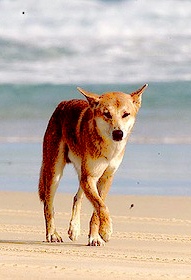Science warns prime predators need protection too
 Australian scientists have contributed to an international report urging world governments to better protect large carnivores, saying a decline at the apex will flow through the food chain.
Australian scientists have contributed to an international report urging world governments to better protect large carnivores, saying a decline at the apex will flow through the food chain.
Studies have shown dramatic drops in the populations and geographic range of large mammalian carnivores over the last two centuries, including for the Australian dingo.
Researchers do not fully understand the extent of trickle-down effects, but say there is no doubt they would be significant and widespread.
An international review has been published in the journal Science examining the conservation status and ecological impact of the world’s 31 largest mammalian carnivores; iconic big cats like the African lion and cheetah, otters, American and European bears and wolves, and dingoes were included.
The major findings were that the environmental importance of the animals is underestimated, current wildlife management practices to limit or eradicate top predators are outdated, and new strategies are needed to facilitate co-existence between humans and apex predators.
“There is now a substantial body of research demonstrating that, alongside climate change, eliminating large carnivores is one of the most significant anthropogenic impacts on nature,” the review says.
“The balance of ecosystems can shift dramatically,” Dr Mike Letnic, from the UNSW Centre for Ecosystem Science and co-author of the paper, said.
“Research on dingoes from Australia shows that populations of foxes and kangaroos irrupt following the removal of dingoes. Foxes in particular pose a considerable threat to small native mammals.”
“Overall, the suppression of dingoes has probably contributed to the endangerment and extinction of small marsupials and rodents over much of the continent,” says Dr Letnic.
More than 60% of the animals included in the review are considered by the International Union for the Conservation of Nature to be threatened and at risk of local or complete extinction, and 77% are experiencing continuing population declines.








 Print
Print